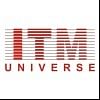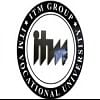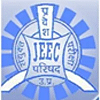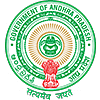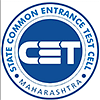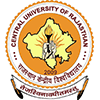
Table of Contents
KEE 2023 syllabus will be based on topics of 11th and 12th standard Physics, Chemistry, Mathematics and Biology. The exam will test the candidate's knowledge and grasp of Physics, Chemistry, Mathematics and Biology. Hence candidates are advised to understand the concepts of these subjects to be able to perform best in KEE 2023.
KEE 2023 Syllabus
Candidates can refer to the KEE 2023 syllabus given below as specified by the University.
KEE 2023 Mathematics Syllabus
- Applications of Matrices and Determinants
Adjoint, Inverse - Properties, Computation of Inverses, Solution of a System of Linear Equations by Matrix Inversion Method. Rank of a Matrix/Elementary Transformation on a Matrix, Cramer’s Rule, Non-Homogeneous Equations, Homogeneous Linear System and Rank method. - Complex Numbers
Complex Number System - Conjugate, Properties, Ordered Pair Representation. Modulus – Properties, Geometrical Representation, Polar Form, Principal Value, Conjugate, Sum, Difference, Product, Quotient, Vector Interpretation, Solutions of Polynomial Equations, De Moivre’s Theorem and Its Applications. Roots of a Complex Number – nth roots, cube roots, fourth roots. - Analytical Geometry of Two Dimensions
Definition of a Conic - General Equation of a Conic, Classification concerning the general equation of a Conic, Classification of Conics concerning Eccentricity. Equations of Conic Sections (parabola, ellipse, and hyperbola) in standard forms and general forms/ Directrix, Focus and Latus rectum - a parametric form of Conics and Chords/ Tangents and Normals/ Cartesian form and parametric form/equation of Chord of Contact of Tangents from a point (x1,y1 ) to all the above said curves. Asymptotes, Rectangular Hyperbola/ Standard equation of a rectangular hyperbola. - Vector Algebra
Scalar Product – Angle between two Vectors, Properties of Scalar product, and applications of Dot products. Vector product right-handed and left-handed systems, properties of vector product and applications of cross product/ Product of three vectors/ Scalar triple product, properties of the scalar triple product, vector triple product. - Differential Calculus
Derivative as a rate measurer - Rate of Change, Velocity, Acceleration, Related Rates, Derivative as a measure of Slope, Tangent, Normal and Angle between Curves, Maxima and Minima. Mean Value Theorem - Rolle’s Theorem, Lagrange Mean Value Theorem, Taylor’s and Maclaurin’s series, L’ Hospital’s Rule, Stationary Points, Increasing, Decreasing, Maxima, Minima, Concavity, Convexity and Points of Inflexion.
- Integral Calculus and Its Applications
Simple Definite Integrals – Fundamental Theorems of Calculus, Properties of Definite Integrals. Reduction Formulae – Reduction Formulae for ∫ sine dx and ∫ cos dx, Bernoulli’s Formula. Area of Bounded Regions, Length of the Curve. - Differential Equations
Differential Equations - Formation of Differential Equations, Order and Degree, Solving Differential Equations (1st order), Variables Separable, Homogeneous, and Linear Equations. Second-Order Linear Differential Equations - Second Order Linear Differential Equations with Constant Co-Efficients, Finding the Particular Integral if f (x) = emx, sinmx, cosmx, x, x2. - Probability Distributions
Probability – Axioms/ Addition law/ Conditional probability/ Multiplicative law/ Baye’s Theorem/ Random variable/ Probability Density Function, Distribution Function, Mathematical Expectation, Variance Theoretical Distributions/ Discrete Distributions, Binomial, Poisson distributions- Continuous distributions, Normal distribution. - Discrete Mathematics
Mathematical Logic – Logical statements, Connectives, Truth Tables, Logical Equivalence, Tautology. - Groups
Binary Operations, Semigroups, Monoids, Groups, Order of a Group, Order of an Element, Properties of Groups.
KEE 2023 Physics Syllabus
-
Electrostatics
Frictional Electricity – Charges and their Conservation/ Coulomb’s law/ Forces between two-point Electric Charges/ Superposition Principle.
Electric Field – Electric Field due to a point charge/ Electric Field Lines / Electric Dipole/ Electric Field Intensity due to a Dipole (on its axial line and the equatorial line)/ Behaviour of Dipole in a Uniform Electric Field/ Application of Electric Dipole in Microwave Oven.
Electric Potential – Potential Difference / Electric Potential due to a point charge and due to a dipole / Equipotential Surfaces/ Electrical potential energy of a system of two point charges Electric Flux/ Gauss’s Theorem/ Field due to Infinitely Long Straight Wire/ Field due to uniformly charged infinitely Plane Sheet/ Field due to two Parallel Sheets/ Field due to Uniformly Charged Thin Spherical Shell (inside and outside).
Electrostatic Induction – Capacitor and Capacitance/ Dielectric and Electric Polarization/ Parallel Plate Capacitor with and without Dielectric Medium/ Applications of a Capacitor/ Energy stored in a Capacitor/ Capacitors in Series and Parallel/ Action of Points/ Lightning Arrester/ Van de Graaff generator. -
Current Electricity
Electric Current – Flow of Charges in a Metallic Conductor/ Drift Velocity and Mobility/ Their Relation with Electric Current
Ohm’s Law/ Electrical Resistance/ V-I Characteristics/ Electrical Resistivity and Conductivity/ Classification of materials in terms of Conductivity/ Superconductivity/ Elementary ideas/ Carbon Resistors/ Colour code for Carbon Resistors/ Combination of Resistors/ Series and parallel/ Temperature Dependence of Resistance/ Internal Resistance of a Cell/ Potential difference and emf of a cell
Kirchoff’s law – Illustration by simple circuits/ Wheatstone’s Bridge and its applications for Temperature Coefficient of Resistance Measurement/ Meterbridge/ Special case of Wheatstone Bridge / Potentiometer/ Principle/ Comparing the emf of two cells
Electric Power / Chemical effect of Current/ Electro Chemical Cells - Primary (Voltaic, Lechlanche, and Daniel cells)/ Secondary/ Rechargeable Cell/Lead Acid Accumulator. -
Effects of Electric Current
Heating effect – Joule’s Law/ Experimental Verification/ Thermoelectric Effects /Seeback Effect/ Peltier Effect/ Thomson Effect/ Thermocouple, Thermo Emf, Neutral and Inversion Temperature – Thermopile. Magnetic Effect of Electric Current – Concept of Magnetic Field/ Oersted’s Experiment/ Biot/ Savart law/ Magnetic Field due to an infinitely long current carrying Straight Wire and Circular Coil/ Tangent Galvanometer/ Construction and Working/ Bar Magnet as an Equivalent Solenoid/ Magnetic Field Lines/ Ampere’s Circuital Law and its application to Solenoid - Force on a moving charge in Uniform Magnetic Field and Electric Field/ Cyclotron/Force on Current-Carrying Conductor in a Uniform Magnetic Field/ Forces between Two Parallel Current carrying Conductors/Definition of the ampere
Torque experienced by a Current Loop in a Uniform Magnetic Field - Moving Coil Galvanometer/ Conversion to Ammeter and Voltmeter/ Current Loop as a Magnetic Dipole and Its Magnetic Dipole Moment/ Magnetic Dipole moment of a Revolving Electron -
Electromagnetic Induction and Alternating Current
Electromagnetic Induction – Faraday’s law/ Induced Emf and Current/ Lenz’s Law
Self Induction/ Mutual Induction/ Self Inductance of a Long Solenoid/ Mutual Inductance of two Long Solenoids
Methods of Inducing Emf – (1) By changing Magnetic Induction (2) By changing area enclosed by the Coil and (3) By changing the orientation of the Coil (Quantitative Treatment). AC Generator – Commercial Generator (Single Phase, Three Phase)Eddy Current/ Applications/ Transformer/ Long distance Transmission Alternating Current/ Measurement of AC/ AC Circuit with Resistance/ AC Circuit with Inductor/ AC Circuit with Capacitor/ LCR Series Circuit/ Resonance and Q-Factor: Power in AC circuits - Electromagnetic Waves and Wave Optics
Electromagnetic Waves and Their Characteristics – Electromagnetic Spectrum, Radio, Microwaves, Infra-Red, Visible, Ultra Violet – X rays, Gamma Rays – Propagation of Electromagnetic waves Emission and Absorption Spectrum/ Line, Band and Continuous Spectra – Fluorescence and Phosphorescence Theories of light/ Corpuscular/ Wave/ Electromagnetic and Quantum Theories
Scattering of Light – Rayleigh’s Scattering/ Tyndal scattering/ Raman Effect – Raman Spectrum/ Blue Colour of The Sky and Reddish appearance of the Sun at Sunrise and Sunset/ WaveFront and Huygens’s Principle – Reflection, Total Internal Reflection and Refraction of plane wave at a plane surface using wavefronts. Interference – Young’s Double Slit experiment and expression for Fringe Width/ Coherent source/ Interference of light/ Formation of colours in thin films / Analytical Treatment/Newton’s rings
Diffraction – Differences between Interference and Diffraction of Light/ Diffraction Grating Polarization of Light Waves/ Polarization by Reflection/ Brewster’s Law/ Double Refraction/ Nicol Prism/ Uses of Plane Polarised Light and Polaroids/ Rotatory Polarization / Polarimeter. -
Atomic Physics
Atomic Structure – Discovery of the Electron/ Specific Charge (Thomson’s method) and Charge of the Electron (Millikan’s oil drop method)/ Alpha Scattering/ Rutherford’s Atom Model/ Bohr’s Model/ Energy Quantization – Energy and Wave Number Expression/ Hydrogen Spectrum Energy Level Diagrams/ Sodium and Mercury Spectra/Excitation and Ionization Potentials. Sommerfeld’s Atom Model – X rays/ Production, Properties, Detection, Absorption, Diffraction of X-rays – Laue’s Experiment/ Bragg’s law/ Bragg s X-ray Spectrometer/ X-ray Spectra/ Continuous and Characteristic X-ray Spectrum/ Mosley’s law and Atomic Number
Masers and Lasers – Spontaneous and Stimulated Emission/ Normal Population and Population Inversion/ Ruby laser/ He-Ne Laser/ Properties and Applications of Laser Light/ Holography. - Dual Nature of Radiation and Matter – Relativity
Photoelectric Effect – Light Waves and Photons/ Einstein’s Photoelectric Equation/ Laws of Photoelectric Emission/ Particle Nature of Energy/ Photoelectric Equation/ Work Function/ Photocells and their application.
Matter Waves – Wave Mechanical Concept of the Atom/ Wave Nature of Particles/ de Broglie Relation/ de Broglie Wave Length of an Electron/ Electron microscope.
Concept of Space, Mass, Time – Frame of References/ Special Theory of Relativity/ Relativity of Length, Time and Mass with Velocity – (E = mc2)
Nuclear Physics
Nuclear Properties – Nuclear Radii, Masses, Binding Energy, Density, Charge – Isotopes, Isobars, and Isotones/ Nuclear Mass Defect/ Binding Energy – Stability of Nuclei-Bain Bridge Mass Spectrometer
Nature of Nuclear Forces – Neutron/ Discovery/ Properties/ Artificial Transmutation/ Particle Accelerator
Radioactivity – Alpha, Beta and Gamma Radiations and their properties, α-decay, β-decay, and γ- decay/ Radioactive Decay Law/ Half-life/ Mean Life/ Artificial Radioactivity – Radio Isotopes
* Effects and uses of Geiger-Muller counter Radio Carbon Dating – Biological Radiation Hazards Nuclear Fission/ Chain Reaction/ Atom Bomb/ Nuclear Reactor/ Nuclear Fusion/ Hydrogen Bomb/ Cosmic Rays/ Elementary Particles
-
Semiconductor Devices and Their Applications
Semiconductor Theory – Energy band in Solids/ Difference between Metals, Insulators, and Semiconductors based on Band Theory/ Semiconductor Doping/ Intrinsic and Extrinsic Semi-Conductors
Formation of P-N Junction – Barrier Potential and Depletion Layer/ P-N Junction Diode/ Forward and Reverse bias Characteristics/ Diode as a Rectifier/ Zener Diode/ Zener Diode as a Voltage Regulator/ LED.
Junction Transistors – Characteristics/ Transistor as a Switch/ Transistor as an Amplifier/ Transistor Biasing - RC, LC Coupled and Direct Coupling in Amplifier/Feedback Amplifier/ Positive and Negative Feedback/ Advantages of Negative Feedback Amplifier/ Oscillator – Condition for Oscillations/ LC circuit/ Colpitts Oscillator.
Logic Gates – NOT, OR, AND, EXOR using discrete components/ NAND and NOR gates as Universal Gates – Integrated Circuits
Laws and theorems of Boolean’s algebra – Operational Amplifier/ Parameters/ Pin-out Configuration/ Basic Applications/ Inverting Amplifier/ Non-Inverting Amplifier/ Summing and Difference Amplifiers
Measuring Instruments – Cathode Ray Oscilloscope/ Principle/ Functional units/ Uses / Multimeter/ Construction and Uses. -
Communication Systems
Modes of Propagation, Ground Wave – Sky Wave Propagation
Amplitude Modulation, Merits, and Demerits – Applications/ Frequency Modulation/ Advantages and Applications/ Phase modulation
Antennas and directivity
Radio Transmission and Reception – AM and FM/ Super Heterodyne Receiver
T.V. Transmission and Reception – Scanning and Synchronizing
Vidicon (camera tube) and Picture Tube – Block Diagram of a Monochrome TV Transmitter and Receiver Circuits
Radar – Principle/ Applications
Digital Communication – Data Transmission and Reception/ Principles of Fax, Modem, Satellite Communication – Wire, Cable, and Fibre-Optical Communication
KEE 2023 Chemistry Syllabus
- Atomic Structure
Bohr’s Atomic Model – Limitations/ Sommerfeld’s Theory of Atomic Structure; Electronic Configuration and Quantum Numbers; Shapes of s, p, d, f Orbitals/ Pauli’s Exclusion Principle/ Hund’s Rule of Maximum Multiplicity/ Aufbau Principle of Filling up of Electrons in Orbitals. Hydrogen Spectrum – Lyman, Balmer, Paschen, Brackett and Pfund series; deBroglie’s theory; Heisenberg’s Uncertainty Principle – Wave Nature of Electron – Schrodinger Wave Equation and Its Significance/ Eigen Values and Eigen Functions. Hybridization of Atomic Orbitals to Form Molecular Orbitals. - p, d, and f – Block Elements
p block elements – Phosphorous Compounds; PCl3, PCl5 – Oxides. Hydrogen Halides, Inter-Halogen Compounds. Xenon Fluorides. General Characteristics of d–block Elements/ Electronic Configuration/ Oxidation States of first-row Transition Elements and their colors; Lanthanides – Introduction, Electronic Configuration, General Characteristics, Oxidation State – Lanthanide Contraction. -
Coordination Chemistry and Solid State Chemistry
Terminology in Coordination Chemistry – IUPAC nomenclature of Mononuclear Coordination Compounds – Isomerism, Geometrical Isomerism in 4-coordinate, 6-coordinate complexes. Werner’s Theory of Co-Ordination, Valence Bond Theory. Uses of Coordination Compounds. Bioinorganic compounds (Haemoglobin and chlorophyll). Lattice – Unit Cell, Systems, Types of Crystals, Packing in Solids; Ionic Crystals – Imperfections in Solids – Point Defects. X-Ray Diffraction -
Thermodynamics, Chemical Equilibrium and Chemical Kinetics
First and Second Law of Thermodynamics – Spontaneous and Non Spontaneous Processes, Entropy, Gibb’s Free Energy – Free Energy Change and Chemical Equilibrium – Significance of Entropy. Law of Mass Action – Le Chatlier’s Principle, Applications of Chemical Equilibrium. Rate Expression, Order and Molecularity of Reactions, Zero Order, First Order and Pseudo First Order Reaction – Half-Life Period. Determination of Rate Constant and Order of Reaction. Temperature Dependence of Rate Constant – Arrhenius Equation, Activation Energy -
Electrochemistry
Theory of Electrical Conductance; Metallic and Electrolytic Conductance. Faraday’s Laws – Theory of Strong Electrolytes/ Specific Resistance, Specific Conductance, Equivalent and Molar Conductance – Variation of Conductance with Dilution/ Kohlraush’s Law/ Ionic Product of water, pH and pOH/ Buffer Solutions/ Use of pH values. Cells – Electrodes and Electrode Potentials/ Construction of Cell and EMF Values, Fuel Cells, Corrosion, and Its Prevention. -
Isomerism in Organic Compounds
Definition, Classification – Structural Isomerism, Stereo Isomerism – Geometrical and Optical Isomerism. Optical Activity/ Chirality – Compounds Containing Chiral Centres – R, S Notation, D, L Notation. -
Alcohols and Ethers
Nomenclature of Alcohols – Classification of Alcohols/ Distinction between Primary, Secondary, and Tertiary Alcohols/ General methods of Preparation of Primary Alcohols, Properties. Aromatic Alcohols – Preparation and Properties of Phenols and Benzyl Alcohol. Ethers – Properties of Aliphatic Ethers – Uses. Aromatic Ethers – Preparation of Anisole – Uses. -
Carbonyl Compounds
Nomenclature of Carbonyl Compounds – Comparison of Aldehydes and Ketones. General methods of Preparation of Aldehydes/ Properties – Uses. Aromatic Aldehydes – Preparation of Benzaldehyde/ Properties and Uses. Aromatic Ketones – Preparation of Acetophenone/ Properties – Uses, Preparation of Benzophenone – Properties. Name Reactions; Clemmenson Reduction, Wolff – Kishner Reduction, Cannizaro Reaction, Claisen Schmidt Reaction, Benzoin Condensation, Aldol Condensation. Preparation and Applications of Grignard Reagents. -
Carboxylic Acids and their derivatives
Nomenclature – Preparation of Aliphatic Monobarboxylic Acids/ Formic Acid/ Properties – Uses. Aromatic acids; Benzoic and Salicylic Acid – Properties – Uses. Derivatives of Carboxylic Acids; Acetyl Chloride (CH3COCl)/ Preparation – Properties – Uses. Preparation of Acetamide, Properties – Acetic Anhydride - Preparation, Properties. Preparation of Esters – Methyl Acetate – Properties. -
Organic Nitrogen Compounds
Aliphatic Nitro Compounds – Preparation of Aliphatic Nitroalkanes/ Properties – Uses. Aromatic Nitro Compounds – Preparation/ Properties – Uses. The distinction between Aliphatic and Aromatic Nitro Compounds. Amines; Aliphatic Amines – General methods of Preparation/ Properties – Distinction between primary, secondary, and tertiary Amines. Aromatic amines – Synthesis of Benzylamine/ Properties, Aniline – Preparation/ Properties – Uses. The distinction between Aliphatic and Aromatic Amine. Aliphatic Nitriles – Preparation/properties – Uses. Diazonium Salts – Preparation of Benzene Diazonium Chloride. -
Biomolecules
Carbohydrates – Distinction between Sugars and Non-Sugars, Structural formulae of Glucose, Fructose, and Sucrose, with their linkages, Invert Sugar – Definition, Examples of Oligo and Polysaccharides, Amino Acids – classification with examples, Peptides – properties of the peptide bond.
KEE 2023 Biology Syllabus
Botany
- Cell Biology & Genetics
Cell-Structure and Organelles-Chromosomes: Structure and Types- Genes and Genome/ Linkage and Crossing Over/ Gene Mapping/ Recombination of Chromosomes/ Mutation/ Chromosomal Aberrations/ DNA as Genetic Material: Structure of DNA, Replication of DNA/ Structure of RNA and Its types.
- Biotechnology: Recombinant DNA Technology - Transgenic Plants and Microbes/ Plant Tissue Culture and its Applications/ Protoplast Fusion -SCP.
- Plant Physiology
Photosynthesis: Significance, Site of Photosynthesis, Photochemical and Biosynthetic Phases, Electron Transport System, Photophosphorylation, C3 and C4 Pathways, Photorespiration, Photosynthesis, Mode of Nutrition: Autotrophic, Heterotrophic, Chemosynthesis Respiration: Mechanism, Glycolysis, Krebs Cycle, Pentose Pathway, Anaerobic Respiration, Fermentation, Plant Growth: Regulators, Phytohormones- Auxins, Gibberellins, Cytokinins.
- Biology in Human Welfare: Food production, Breeding Experiments, Improved Varieties, Role of Biofertilizers -Crop Diseases and their Control Biopesticides - Genetically Modified Food/ Bio-War/ Bio-Piracy/ Bio-Patent/ Medicinal Plants and Microbes –Economic Importance: Food yielding (Rice), Oil yielding (Groundnut), Fiber Yielding (Cotton), Timber yielding (Teak).
Zoology
- Human physiology: Nutrition – Carbohydrates/ Proteins/ Lipids/ Vitamins/ Minerals/ Water/ Balanced diet/ Calorie Values/ Hyperglycemia, Hypoglycemia, Diabetes mellitus - Malnutrition.
*Digestion - Enzymes and Enzyme Action. A brief account of the following: Dental Caries - Root Canal Therapy, Liver Cirrhosis, Hepatitis, Respiration: Process of Pulmonary Respiration, Breathing Exercises - Yoga, Functioning of Heart, Myocardial Infarction, Angiogram– Heart attack - ECG, Blood Pressure, Heart Transplantation, Blood Components – Functions, Plasma, Corpuscles Blood Clotting - Anticoagulants – Thrombosis, Embolism, Blood Donation, Blood Banks Brain - Functioning of Different Regions, Spinal Cord – Functioning, Pituitary, and Thyroid, Parathyroid Hormones, Insulin, Hormones of Adrenal Cortex and Medulla, Reproductive Hormones, Eye-Focusing Mechanism & Photo-Chemistry of Retina, Eye Infections, Ear, Skin- Melanin – Functions, Tongue, Urea Biosynthesis, Reproductive System, Brief Account of Spermatogenesis/ Oogenesis /Menstrual cycle, Invitro Fertilization, Birth Control.
- Microbiology: Introduction, History of Medical Microbiology, Pasteur, Koch and Lister Virology - Structure, Genetics, Culture and Diseases, AIDS and Its control, Bacteriology - Structure, Genetics, and Diseases. Protozoan Microbiology - Disease-Related, Larval Microbiology.
* Diseases Oriented Pathogenicity of Microorganisms
- Immunity: Immune system: Innate Immunity, Acquired Immunity – Humoral, Innate Immunity, Lymphoid Cells, Mononuclear phagocytes, Polymorphonuclear phagocytes, Cytokines, Structure of Antibody (Ig), Antigen-Antibody Reactions, Acquired immunity, Development of Immune System, T-Cell Activation, Monoclonal Antibodies, Cytotoxicity, Immunology of Tissue Transplantation, Immune Deficiency Diseases.
- Modern Genetics: Human Genetics-Karyotyping, Chromosome Gene Mapping, Recombinant DNA Technology and Segmenting, Genetic Diseases, Human Genome Project, Cloning, Transgenic Organisms – Genetically Modified Organisms (GMO), Gene Therapy, Bioinformatics.
*application, DNA sequencing and protein sequencing, and Protein structure
- Environmental Science: Human Population and Explosion – Issues Global Warming/ Crisis/ Green House Effect, Ozone Layer Depletion, Waste Management, Biodiversity Conservation, Poverty and Environment, Freshwater Crisis and Management.
- Applied biology: Livestock and Management, Dairy Breeds of cattle, Milch breed, Exotic and cross breeds, Techniques adapted in cattle breeding, Poultry – Farming techniques, Fish farming, Edible fishes of Tamilnadu, Medical Lab – Techniques- Sphygmomanometer, Hemocytometer, Urine – Sugar analysis, CT Scan, Endoscopic Techniques, Artificial Pacemaker.
- Theories and Evolution: Lamarckism, Neo-Lamarckism, Darwinism, Neo Darwinism / Modern Concept of Natural Selection, Species Concept, Origin of Species and Isolating, Mechanisms.
FAQs on KEE Syllabus
Q: How many Subjects are included in KEE 2023 Syllabus?
Q: Where can I find the complete Syllabus of KEE 2023?
Q: Are all chapters in KEE 2023 syllabus important for the KEE 2023 exam?

